2024 Hyundai Santa Fe XRT First Drive Review: Sweet spot off the beaten path

Just like with so many recent Hyundais, the 2024 Santa Fe grabbed the car world's attention with its bold design. The midsize crossover jumped from a handsome-yet-generic shape to a crisply creased box, capitalizing on both the trend toward squared-off and off-road-oriented designs and Hyundai’s recent retro-futuristic motif. According to Kevin Kang, the head of Hyundai Design North America, the design and development process took place during the pandemic, and it quickly became apparent that customers were going to want something that looked, felt and was reasonably capable of getting them away from it all. To that end, it’s evident from early sketches that ruggedness was always a key focus. That led in part to the boxy shape, but it informed the desire to offer maximum space, again, as a necessity for getting away. Theoretically, you would need space for gear, supplies and possibly for sleeping in. Even in South Korea, car camping, or "chabak" in Korean, was becoming popular as the Santa Fe was developed.
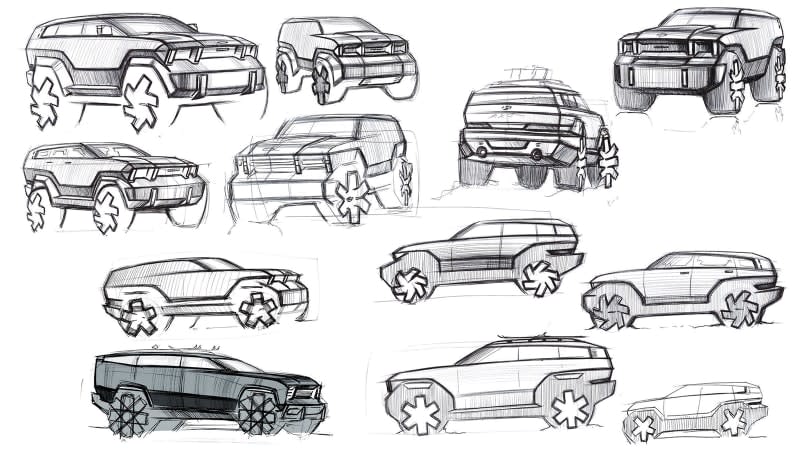
While every version of the new Santa Fe benefits from the design team's focus on ruggedness and space, one trim inarguably represents the pinnacle of those ideas: the XRT. The trim made its debut on the previous Santa Fe, and has expanded to the Tucson, Santa Cruz and Palisade. While all of those were and are mostly appearance packages (the Palisade version is even called the “Urban” in Canada), the 2024 Hyundai Santa Fe XRT is more of the real deal. It gets an additional 1.3 inches of ground clearance for starters. An inch of that is from a suspension lift, while the rest comes from the larger 29.6-inch Continental TerrainContact all-terrain tires. That gives the XRT 8.3 inches of ground clearance, which is 0.2 more than the Honda Passport (including the TrailSport), 0.1 less than a standard Jeep Grand Cherokee, and 0.4 less than a standard Subaru Outback. It’s the same as the Honda Pilot TrailSport. The lift also improves approach, breakover and departure angles by 1.9, 2.1 and 1.5 degrees respectively compared to a regular, non-hybrid Santa Fe.
Design-wise, the XRT receives black badging all around, a unique blocky grille insert, XRT branded leatherette seats, more versatile raised roof rails, and those all-terrain tires are fitted to unique 18-inch wheels. That provides more sidewall on top of the chunkier tread pattern. The wheels are plenty chunky themselves, with thick rims that vaguely suggest beadlock wheels. Also, while the XRT does not have a specific off-road drive mode, the traction control settings have been adjusted across the board for better off-road use, such as allowing for a bit more tire slip than normal. Hill descent control and an all-wheel-drive lock button are included, the latter of which keeps the clutch pack that connects the rear axle fully engaged. Activating these features also further adjusts the traction settings.
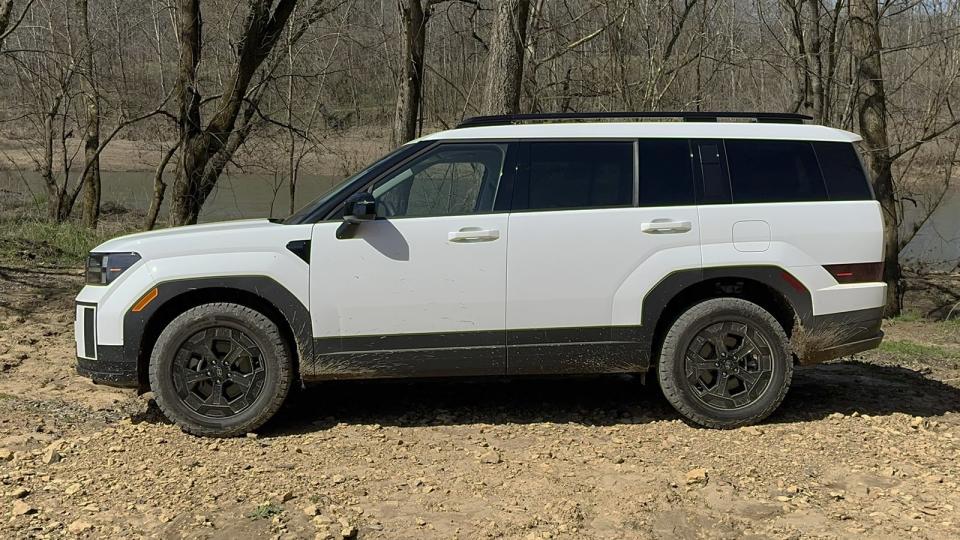
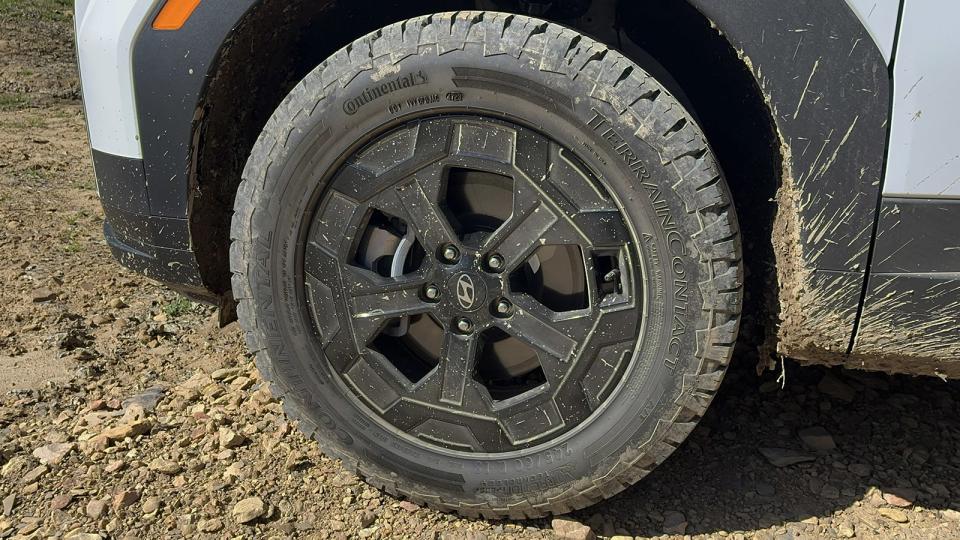
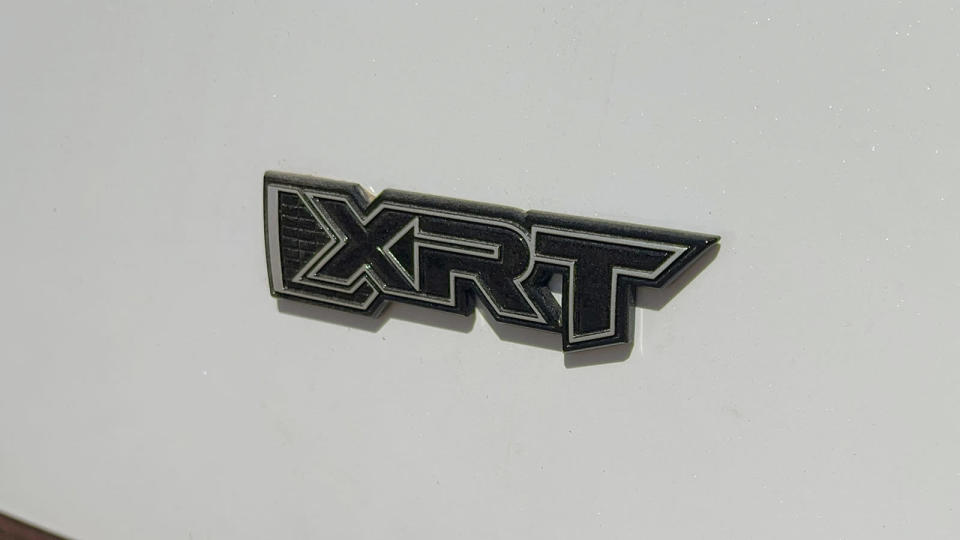
The XRT is only available with the turbocharged 2.5-liter four-cylinder, which is a very welcome improvement over the naturally aspirated 2.5-liter four-cylinder of the previous version. Like other Santa Fes, the engine makes 277 horsepower and 311 pound-feet of torque (compared to 191 horsepower and 181 pound-feet for the old one), but the cooling system has been enhanced. It gets a higher-output radiator fan, and there are larger grille openings for additional airflow. This gives the XRT an extra 1,000 pounds of towing capacity over the non-hybrid models for 4,500 pounds total. That falls short of those competitors mentioned above, minus the Outback, but it’s still a decent amount for towing a small camper or toy hauler. Unfortunately, a trailer hitch is not included (unlike the Honda TrailSports and Nissan Pathfinder Rock Creek), meaning you’ll have to search dealers for an optionally equipped XRT if you’re looking to tow or use a hitch-mounted rack.
Like other rugged crossovers with all-terrain tires, the XRT does achieve its extra capability at the expense of fuel economy. With 19 mpg in the city, 26 on the highway and 22 mpg combined, it's 1 to 2 mpg thirstier than any other non-hybrid Santa Fe. The XRT is also only offered with all-wheel-drive, and it gets an eight-speed dual-clutch automatic transmission.
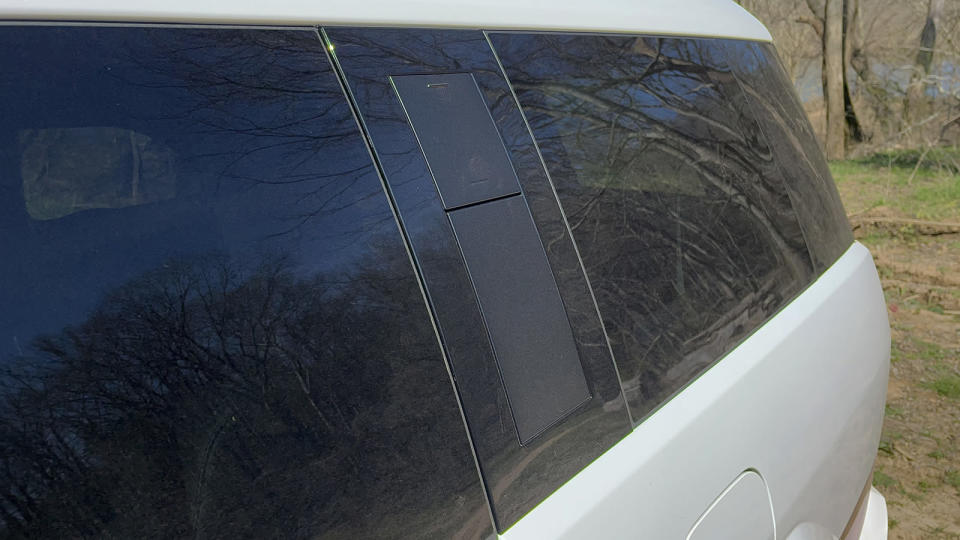
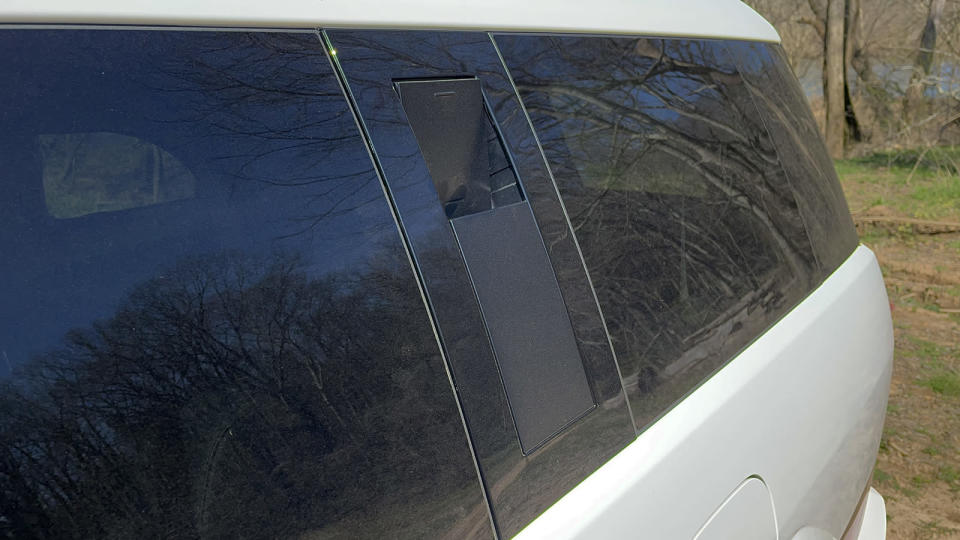
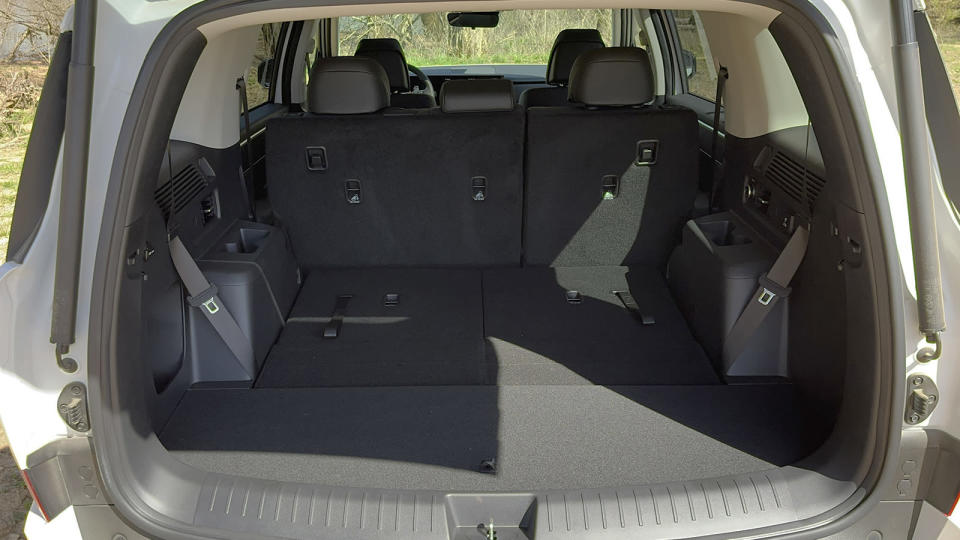
The XRT of course benefits from the new Santa Fe’s overall redesign. It has the nifty concealed grab handles for accessing whatever you’ve loaded onto the roof. The extra exterior size enabled the introduction of a third row of seats, and with them folded, there's more cargo space behind the second row than before (36.4 cubic feet up to 40.5). Total cargo space also jumps from 72.1 to 79.6 cubic feet. Even the hatch has been expanded to make it much easier to load bulky items. Height expands by 2 inches to 32, and width expands by 5.7 inches to 50.2. Just don’t expect to fully utilize both the third row and all that extra cargo space: The aft-most row is surprisingly spacious, but it comes at the expense of cargo space behind it. You’ll be lucky to carry shopping bags. Even more reason to have those better roof rails and opt for the trailer hitch, then.
With all that out of the way, let's get into the actual drive. On this trip, we had access to both an XRT and the top-spec Calligraphy for road driving, with an off-road course set up for the version best suited for it. To be clear, that would not be the Calligraphy, as its 21-inch wheels would not have made for a good experience, and probably would've resulted in some damage.

 Yahoo Autos
Yahoo Autos 
